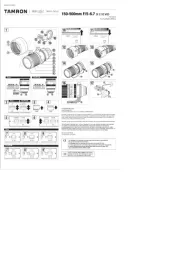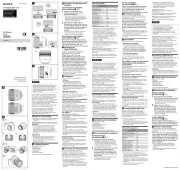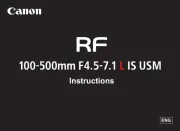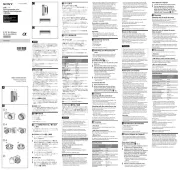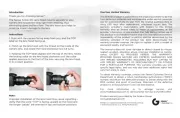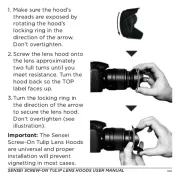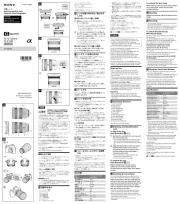
Thank you for purchasing this Tamron lens. Before using your new lens, please read the contents of this Owner’s manual to properly
use the lens. Also, it will be important to read the manual of the camera to which you will attach the lens.
After reading, store this Owner’s manual in a safe place.
Please read also the document “Precautions for Safe Use of Tamron Lenses” for the detailed safety precautions to observe when using
• Explains precautions that help to prevent problems.
• Explains things you should know in addition to basic operations.
PART NAMES (Refer to Fig. )1
① ② Lens hood Hood attaching alignment mark
③ ④ Hood locking mark Filter ring
⑤ ⑥ Hood release mark Focus ring
⑦ ⑧ Zoom ring Focal length scale
⑨ ⑩ Focal length mark Focus set button
⑪ ⑫ Zoom lock switch Connector port
⑬ ⑭ Lens attachment mark Lens-camera interface contacts
Minimum Object Distance (MOD)
0.19 m (7.48") (Wide) / 0.99 m (39.0") (Tele)
Maximum Magnification Ratio
1:2.8 (Wide MOD) /1:3.8 (Tele MOD)
• Length : From front end of the lens to mount surface.
• Specifications, appearance, functionality, etc., are subject to change without prior notice.
ATTACHING AND REMOVING THE LENS
Remove the rear cap of the lens. Align the lens attachment mark and mounting mark on the camera, and then insert the lens.⑬
Turn the lens clockwise until it locks.
To remove the lens, turn the lens in the opposite direction while pressing the lens release button on the camera.
• Turn off the power of the camera before attaching or removing the lens.
• For details, please read the instruction manual of your camera.
Select the desired focus mode on the camera.
For manual focusing, turn the focus ring to acquire the desired focus.⑥
For details, please read the instruction manual of your camera.
• Under AF mode, there may be difficulty for autofocus to work depending on the subject.
The VC (Vibration Compensation) mechanism reduces image blur caused by hand-held shooting.
To activate VC, set your camera steady shot function “ON” in the camera. If the VC is not needed, turn the steady shot function
Press the shutter button halfway and confirm that the viewfinder image is stable before taking a picture.
zVC is effective under the following conditions
• Locations where flash photography is prohibited
• Locations where tripod cannot be used
zVC may not perform sufficiently under the following conditions
• When a photograph is taken from a vehicle that is shaking greatly
• Shooting during excessive movement of the camera
• When shooting while using a tripod
• Deactivate steady shot setting in the camera when taking pictures under bulb photography (long exposures). Otherwise, VC may
• The viewfinder image may become blurred immediately after the shutter button is pressed halfway. This is due to the principles
of VC and not a malfunction.
• When using VC, the total number of images recordable will be reduced due to the camera power consumption.
• Deactivate the vibration compensation in the camera settings when you are shooting while the camera is secured by something
other than your hand (such as a tripod).
• You may feel the lens rattle when the camera is turned off or when the lens is removed from the camera. This is not a
• For details, please read the instruction manual of your camera.



